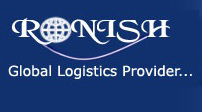
A payment custom clearance receipt (PCCR) is an official document issued by the Nigeria Customs Service (NCS) as formal proof that all import duties, levies, and taxes tied to a particular Bill of Entry (BE) or Pre‑Arrival Assessment Report (PAAR) have been fully paid. Without this receipt, your consignment can be detained at the seaport, airport cargo shed, or land border—incurring storage fees that quickly erode profit margins.
Quick facts
- Issuer: Nigeria Customs Service (via the Single Window trade portal).
- Purpose: Confirms settlement of import duty and VAT; enables release (Exit Note) and delivery.
- Legal basis: Customs & Excise Management Act (CEMA) Cap C45 LFN 2004, Section 46.
- Format: PDF download (with QR code & FIRS TIN) or printed A4 copy stamped by releasing officer.
Why You Need a Payment Custom Clearance Receipt for Every Import Transaction
Running a Nigerian business without compliant import documentation is risky and expensive. Here’s why a payment custom clearance receipt should top your checklist:
- Cargo Release & Delivery – Terminal operators require the PCCR before generating a delivery order (DO).
- Bank Form M Closure – Commercial banks will not close your Form M without the receipt, blocking future forex allocations.
- Audit Readiness – The Federal Inland Revenue Service (FIRS) often requests PCCRs to validate input‑VAT claims.
- Insurance Claims – Underwriters need the receipt to process damage or loss claims on CIF shipments.
- Compliance Reputation – Importers consistently presenting valid PCCRs enjoy faster lanes in NCS selectivity and fewer red‑channel inspections.
Pro Tip: Keep digital backups for at least seven years—aligned with FIRS audit timelines.
Step‑by‑Step Process to Obtain Your Payment Custom Clearance Receipt in Nigeria
Follow these practical steps to secure the receipt without hiccups:
- Pre‑Arrival Assessment Report (PAAR) Confirmation
Make sure that the PAAR has accurate HS codes and customs values. Discrepancies trigger revaluation and extra duties. - Generate Assessment Notice (ASYCUDA World)
Log into the NCS Trade Portal, locate your Bill of Entry, and click “Assess” to create a CR‑Document. - Pay Duties & Taxes via Authorised Dealer Bank
Use the Remita Retrieval Reference (RRR) or CBN e‑Invoice channel. Payments can be made in Naira or e‑Form M‑backed USD. - System Validation & Allocation
The bank’s payment confirmation posts automatically; wait for the “Duty Paid” status on your BE. - Download the Payment Custom Clearance Receipt
Navigate to Receipts » PCCR and click Download (PDF). Verify the QR code using the NCS mobile app. - Present to Releasing Officer
Print and sign the receipt; submit it alongside the Terminal Delivery Order to obtain a Release Note.
Timeline: With accurate documents, the end‑to‑end process averages 24–48 hours after duty payment.
Documents Required When Requesting a Payment Custom Clearance Receipt
- Approved Form M & e‑Invoice
- Original Bill of Lading / Air Waybill
- PAAR (scanned copy)
- Assessment Notice
- Bank Payment Confirmation Receipt
- Tax Identification Number (TIN) certificate
Common Pitfalls Nigerian Importers Face When Securing a Payment Custom Clearance Receipt
- Under‑declaration of Freight Charges leading to additional assessments.
- Late Currency Conversion—using outdated CBN rates inflates duty invoices.
- Mismatch Between Form M and PAAR data fields.
- Using Unlicensed Customs Brokers—violates Section 153 CEMA and causes delays.
How to Avoid These Pitfalls
- Double‑check HS codes with a licensed broker.
- Pay duties within 14 days of assessment to avoid demurrage.
- Keep track of the documentation status of each shipment with a compliance dashboard.
How to Verify the Authenticity of a Payment Custom Clearance Receipt
- QR Code Scan – Use the NCS Trade Portal mobile scanner.
- Receipt Reference Number (RRN) – Cross‑check on the NCS verification page.
- Bank Validation – Call the Trade Services desk of the issuing bank.
- Physical Stamp & Signature – For printed copies, ensure the releasing officer’s stamp matches the manifest date.
Digital Innovations: e‑Receipts and the Future of Payment Custom Clearance Receipt in Nigeria
The NCS is piloting blockchain‑secured PCCRs with immutable transaction hashes. This upgrade is expected to roll out nationwide by Q4 2025, integrating directly with Port Community Systems (PCS) at Apapa, Tin Can, and Onne.
Stat: According to the 2024 Logistics Performance Index, digital customs processes can slash clearance times by 42 %.
Frequently Asked Questions (FAQs)
Q1. Can I obtain a payment custom clearance receipt without a PAAR?
A1. No. The PAAR is a prerequisite for assessment and duty payment.
Q2. What if the QR code on my receipt is unreadable?
A2. Re‑download the PDF or visit the Long Room at the command where your BE was processed.
Q3. How long should I keep the receipt?
A3. Retain both digital and hard copies for minimum seven years.
Conclusion
A correctly issued payment custom clearance receipt protects your cargo, cash flow, and compliance scorecard. Make it non‑negotiable in your shipping workflow. Need help fast‑tracking your documentation? Ronish Nigeria Limited offers end‑to‑end freight forwarding and customs brokerage. Contact us today.
